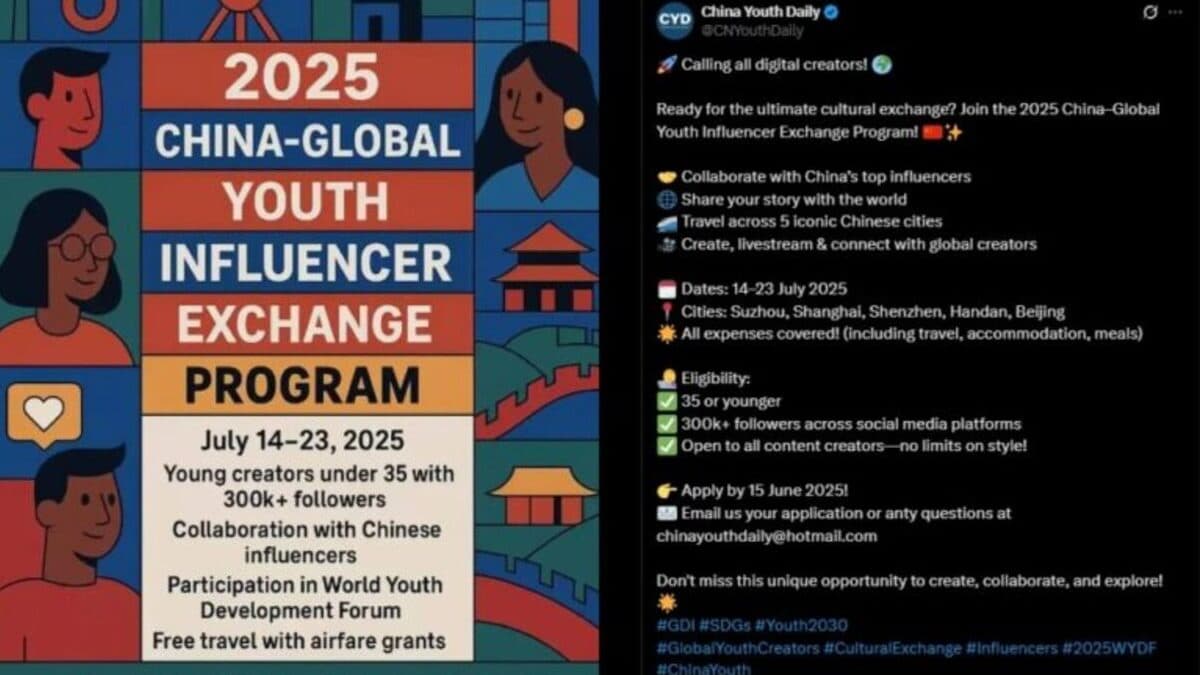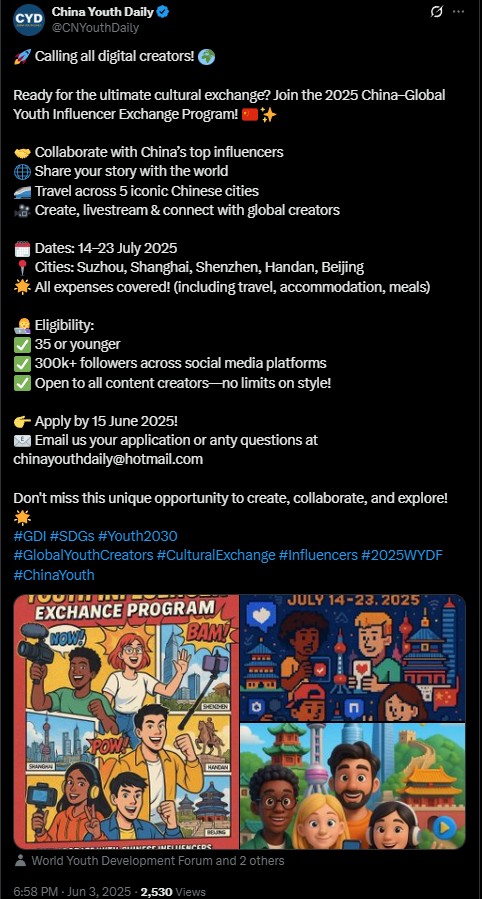China to host US influencers on fully funded 10-day tour under new youth exchange programme
Chinese authorities are inviting US-based influencers with at least 300,000 followers to join a state-funded 10-day tour in July. The initiative aims to promote cross-cultural exchanges, with influencers expected to livestream their visits and collaborate with Chinese creators.

- China is inviting US-based influencers with 300,000+ followers for a fully funded 10-day tour in July under the China-Global Youth Influencer Exchange Programme.
- The itinerary covers five cities, including visits to companies such as Xiaohongshu and BYD, along with cultural activities.
- The initiative aligns with Beijing’s wider strategy of strengthening soft power and shaping international narratives through digital media.
Chinese authorities are launching a new initiative to bring US-based social media influencers to China on a fully funded 10-day tour in July 2025.
The initiative, named the China-Global Youth Influencer Exchange Programme, is part of Beijing’s wider strategy to promote cross-cultural communication and reshape international perceptions of the country.
Programme details and requirements
According to state-affiliated outlets, including China Youth Daily, the programme seeks young influencers with at least 300,000 followers on major platforms such as Instagram, YouTube, TikTok, and X.
Applicants must demonstrate enthusiasm for Chinese culture and have “no history of bad behaviours.” Overseas Chinese students have been urged by College Daily, a publication catering to Chinese students in North America, to nominate suitable influencers from their networks.
Selected participants will receive official invitations, visa assistance, and full sponsorship from Chinese authorities.
Planned itinerary and activities
The itinerary spans five cities: Suzhou, Shanghai, Shenzhen, Handan, and Beijing.
Highlights include visits to major companies such as Xiaohongshu Technology Co and electric vehicle maker BYD Co. Influencers will also tour e-commerce hubs, participate in cultural activities like Taichi lessons, and livestream visits to landmarks such as the Great Wall.
A central feature will be collaborations with Chinese social media influencers. Joint content production is encouraged, with amplification provided by state-run media channels.
State media support and messaging
Chinese state media are expected to play a direct role in promoting influencer output. Participants’ livestreams, videos, and posts will receive additional reach through official platforms, strengthening alignment with Beijing’s narratives.
This reflects a pattern in recent years where foreign influencers have been supported for creating content that presents China in a positive light.
 \
\
Broader influence strategy
The influencer programme forms part of Beijing’s broader soft power approach. In 2024, President Xi Jinping pledged to host 50,000 US students in China and expand cultural and educational exchanges.
Since the Covid-19 pandemic, Chinese state media have frequently praised Western influencers for content showcasing local culture, infrastructure, and innovation.
A 2023 study by the Australian Strategic Policy Institute documented at least 120 foreign influencers who were supported by China, mainly on Chinese platforms, often in exchange for favourable coverage.
Implications for China-US relations
The launch of this new programme comes at a time of complex China-US ties. While both governments remain divided on strategic and economic issues, Beijing has sought to invest in grassroots-level exchanges to improve mutual perceptions.
Analysts suggest that leveraging social media influencers reflects China’s adaptation to the digital information environment, where individual voices on platforms can shape global narratives as much as traditional media outlets.
Critics, however, have raised concerns over whether participation in such state-backed tours may compromise influencers’ independence or lead to content that functions as indirect propaganda.








0 Comments